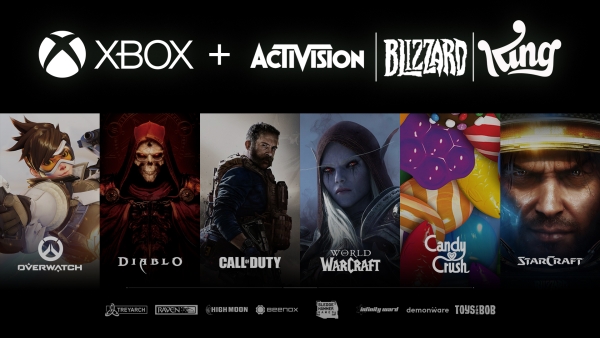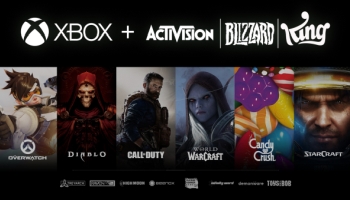
Despondent over poor working conditions, a group of developers left Atari in 1979 and formed Activision, the first fully-independent third-party console developer.
Here we are 43 years later, and executives at Activision stand accused by employees (and government regulators) of creating a hostile workplace of their own. But while a number of employees have struck out on their own over the years, Activision’s fate will soon lie with Microsoft, as CEO Bobby Kotick has decided to sell his company to the consolemaker, effectively putting Activision on the path to becoming a first-party developer.
Microsoft’s acquisition of Activision is a seismic shift for the game industry, and there are a lot of moving parts involved (including those abuse allegations and an FTC approval process that could take up to two years). You’ll find the first steps in that journey in this edition of Bite-Sized Game History, as well as a pop-up museum devoted to Pac-Man, and the infamous (and fictional) Nude Code from Tomb Raider.
![]() You can find a lot of dedicated video game historians on Twitter, and in 280 characters or less, they always manage to unearth some amazing artifacts. Bite-Sized Game History aims to collect some of the best stuff I find on the social media platform.
You can find a lot of dedicated video game historians on Twitter, and in 280 characters or less, they always manage to unearth some amazing artifacts. Bite-Sized Game History aims to collect some of the best stuff I find on the social media platform.
Microsoft reshaped the gaming landscape a year ago when they acquired Bethesda (and Fallout and The Elder Scrolls and Doom and other franchises) for $7.5 billion. We haven’t seen any of the fruits of that partnership just yet (Starfield will launch on November 11), but the consolemaker pulled off an even bigger magic trick last month with the acquisition of Activision Blizzard (and Call of Duty and Overwatch and World of Warcraft and StarCraft and Diablo and Candy Crush) for $68.7 billion.
Microsoft’s initial announcement of this acquisition can be seen here:
Today is a historic moment. We are excited to announce that the world-renowned franchises and talented people at @ATVI_AB will be joining Team Xbox!
Full announcement details here: https://t.co/RwF0QgXVwE pic.twitter.com/jIXuYCcndG
— Xbox (@Xbox) January 18, 2022
Pac-Man celebrated its 40th anniversary in 2020, and fans in the Japanese city of Yokohama can celebrate in style by exploring a pop-up Pac-Man Museum at the Yokohama Landmark Tower until February 28th.
Bandai Namco has furnished the Sky Garden observation deck with a temporary arcade and art gallery, but they’ve also got handwritten design documents on display for some of their classic games.
Matt Walker, a Producer at Capcom, recently posted some fantastic photos from the installation:
Got a chance to go to the Pac-Man exhibit in Yokohama that Sakurai-San Tweeted about recently, and by far the highlight was that they had the original Design Docs for Pac-Man, Mappy, Xevious and more there for people to read through! pic.twitter.com/V1kLs309k1
— Matt Walker (@retroOtoko) January 16, 2022
Jess Morrissette is a professor at Marshall University, studying the intersection of politics and popular culture. This field can take you to some weird places, including the worldwide obsession with a Nude Code for Tomb Raider.
Thanks to a series of pranks, a Playboy spread from one of the models who played Lara Croft, and an unofficial “nude patch” that was accessible through the darker corners of the nascent WWW, fans believed that the infamous secret had to exist somewhere in the game’s code. But though Eidos Interactive and Core Design never created a Nude Code for Tomb Raider, that didn’t stop them from capitalizing on all that publicity.
Recently unearthed by Morrissette, an issue of PlayStation Magazine from 1998 featured two advertisements referencing the code, one for the Video Game Xploder cheat device and one for Tomb Raider III from Eidos themselves (which, to be fair, was mocking the idea of a Nude Code):
"Want the code?" This advertisement for the Video Game Xploder hints at an apocryphal Tomb Raider nude code. Which would seem way worse if Eidos wasn't doing the same thing in its official Tomb Raider 3 ads.
Both ads appeared in the November 1998 issue of PlayStation Magazine. pic.twitter.com/wsSmtXd5KH
— Jess Morrissette (@decafjedi) January 21, 2022
Thanks to the Xbox team, Matt Walker, and Jess Morrissette for supplying the tweets for this edition of Bite-Sized Game History.

